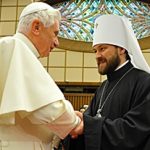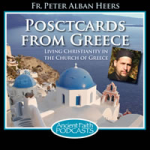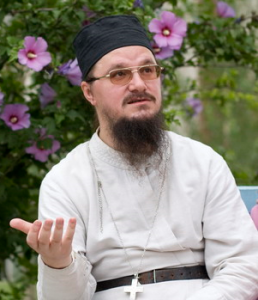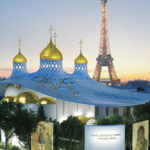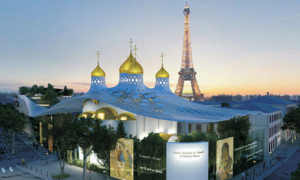
Deprecated: trim(): Passing null to parameter #1 ($string) of type string is deprecated in /home/aoiusa/public_html/wp-content/plugins/sexybookmarks/public.php on line 388
Deprecated: trim(): Passing null to parameter #1 ($string) of type string is deprecated in /home/aoiusa/public_html/wp-content/plugins/sexybookmarks/public.php on line 394
Deprecated: trim(): Passing null to parameter #1 ($string) of type string is deprecated in /home/aoiusa/public_html/wp-content/plugins/sexybookmarks/public.php on line 400
 More arguments for my thesis that “Sexual Orientation” is not an ontological category.
More arguments for my thesis that “Sexual Orientation” is not an ontological category.

GENEVA, MARCH 24, 2011 (Zenit.org).- Here is the address Archbishop Silvano M. Tomasi, permanent representative of the Holy See to the United Nations and Other International Organizations in Geneva, delivered Tuesday at the 16th Session of the Human Rights Council on "sexual orientation."
Mr. President,
The Holy See takes this opportunity to affirm the inherent dignity and worth of all human beings, and to condemn all violence that is targeted against people because of their sexual feelings and thoughts, or sexual behaviors.
We would also like to make several observations about the debates regarding "sexual orientation."
First, there has been some unnecessary confusion about the meaning of the term "sexual orientation," as found in resolutions and other texts adopted within the UN human rights system. The confusion is unnecessary because, in international law, a term must be interpreted in accordance with its ordinary meaning, unless the document has given it a different meaning.[1] The ordinary meaning of "sexual orientation" refers to feelings and thoughts, not to behavior.[2]
Second, for the purposes of human rights law, there is a critical difference between feelings and thoughts, on the one hand, and behavior, on the other. A state should never punish a person, or deprive a person of the enjoyment of any human right, based just on the person’s feelings and thoughts, including sexual thoughts and feelings. But states can, and must, regulate behaviors, including various sexual behaviors. Throughout the world, there is a consensus between societies that certain kinds of sexual behaviors must be forbidden by law. Pedophilia and incest are two examples.
Third, the Holy See wishes to affirm its deeply held belief that human sexuality is a gift that is genuinely expressed in the complete and lifelong mutual devotion of a man and a woman in marriage. Human sexuality, like any voluntary activity, possesses a moral dimension: It is an activity which puts the individual will at the service of a finality; it is not an "identity." In other words, it comes from the action and not from the being, even though some tendencies or "sexual orientations" may have deep roots in the personality. Denying the moral dimension of sexuality leads to denying the freedom of the person in this matter, and undermines ultimately his/her ontological dignity. This belief about human nature is also shared by many other faith communities, and by other persons of conscience.
And finally, Mr. President, we wish to call attention to a disturbing trend in some of these social debates: People are being attacked for taking positions that do not support sexual behavior between people of the same sex. When they express their moral beliefs or beliefs about human nature, which may also be expressions of religious convictions, or state opinions about scientific claims, they are stigmatized, and worse — they are vilified, and prosecuted. These attacks contradict the fundamental principles announced in three of the Council’s resolutions of this session.[3] The truth is, these attacks are violations of fundamental human rights, and cannot be justified under any circumstances.
Thank you, Mr. President.
NOTES
[1] Vienna Convention of the Law of Treaties, Article 31(1): "A treaty shall be interpreted in good faith in accordance with the ordinary meaning to be given to the terms of the treaty in their context and in the light of its object and purpose" (emphasis added). Article 31(4): " A special meaning shall be given to a term if it is established that the parties so intended. " These rules of treaty interpretation are based on customary international law, and are applicable to "soft law."
[2] Moreover, many publications have given definitions of "sexual orientation," and all of the ones that we have seen are similar: they do not refer to behavior; they refer to sexual feelings and thoughts. E.g.:
(1) "sexual orientation means the general attraction you feel towards" another person or persons. Equality Commission (The United Kingdom); See, www.equalityhumanrights.com, under "What does sexual orientation mean?
(2) "sexual orientation may be broadly defined as a preference for sexual partners …." International Labour Office, ABC of Women Workers’ Rights and Gender Equality (2nd ed., 2007), p. 167). A "preference" is a mental-emotional state; it is not conduct.
(3) "sexual orientation refers to a person’s sexual and emotional attraction to people …." Amnesty International, Crimes of Hate, Conspiracy of Silence (Amnesty International Publications, London, 2001), p. vii (emphasis omitted).
(4) "’Sexual orientation’ refers to each person’s capacity for profound emotional, affectional and sexual attraction to, and intimate and sexual relations …." Asia Pacific Forum, ACJ Report: Human Rights, Sexual Orientation and Gender Identity (15th Annual Meeting, Bali, 3-5 Aug. 2010), p. 8.
[3] L-10 on freedom of opinion and expression; L.14 on freedom of religion or belief; L. 38 on combating intolerance, negative stereotyping and stigmatization.
